Abstract
When mineral oil, hexadecane, and glutamate were added to natural samples of varying salinity (3.3 to 28.4%) from salt evaporation ponds and Great Salt Lake, Utah, rates of metabolism of these compounds decreased as salinity increased. Rate limitations did not appear to relate to low oxygen levels or to the availability of organic nutrients. Some oxidation of l-[U-14C]glutamic acid occurred even at extreme salinities, whereas oxidation of [1-14C]hexadecane was too low to be detected. Gas chromatographic examination of hexane-soluble components of tar samples from natural seeps at Rozel Point in Great Salt Lake demonstrated no evidence of biological oxidation of isoprenoid alkanes subject to degradation in normal environments. Some hexane-soluble components of the same tar were altered by incubation in a low-salinity enrichment culture inoculated with garden soil. Attempts to enrich for microorganisms in saline waters able to use mineral oil as a sole source of carbon and energy were successful below, but not above, about 20% salinity. This study strongly suggests a general reduction of metabolic rate at extreme salinities and raises doubt about the biodegradation of hydrocarbons in hypersaline environments.
Full text
PDF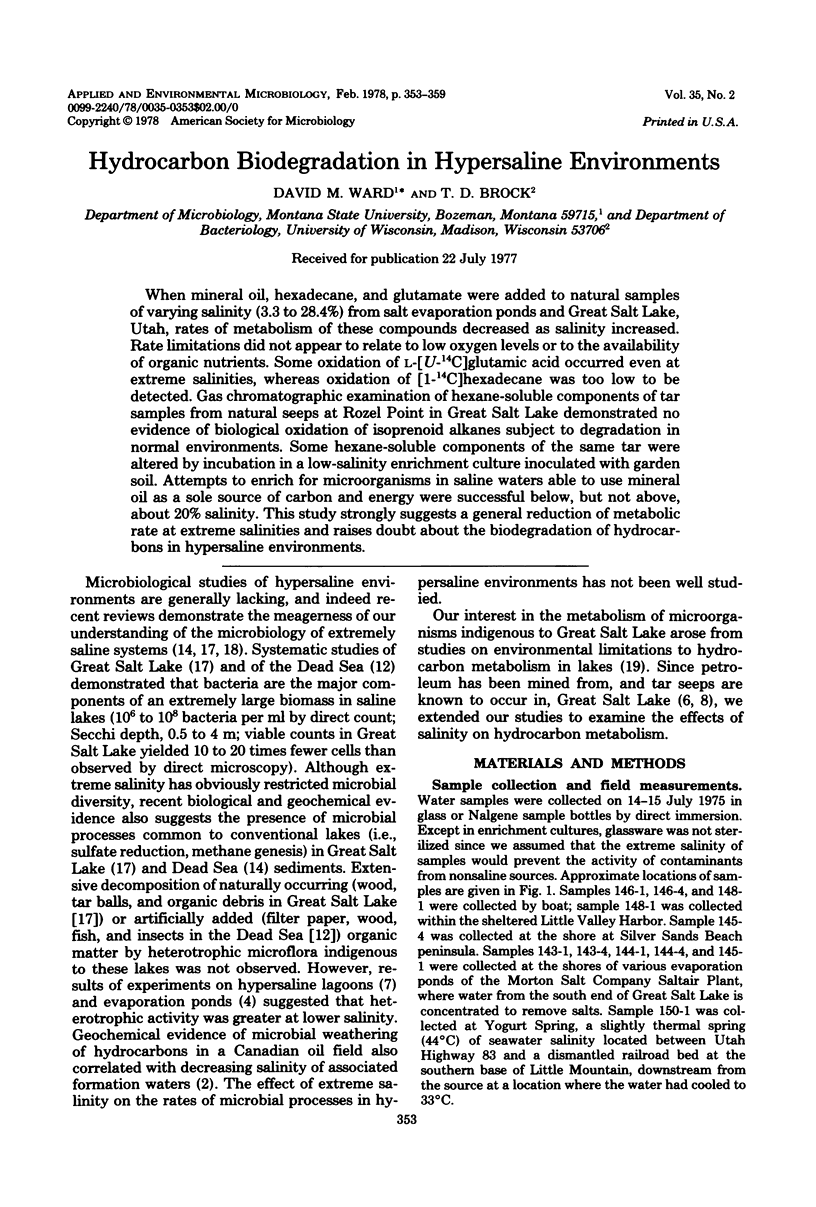
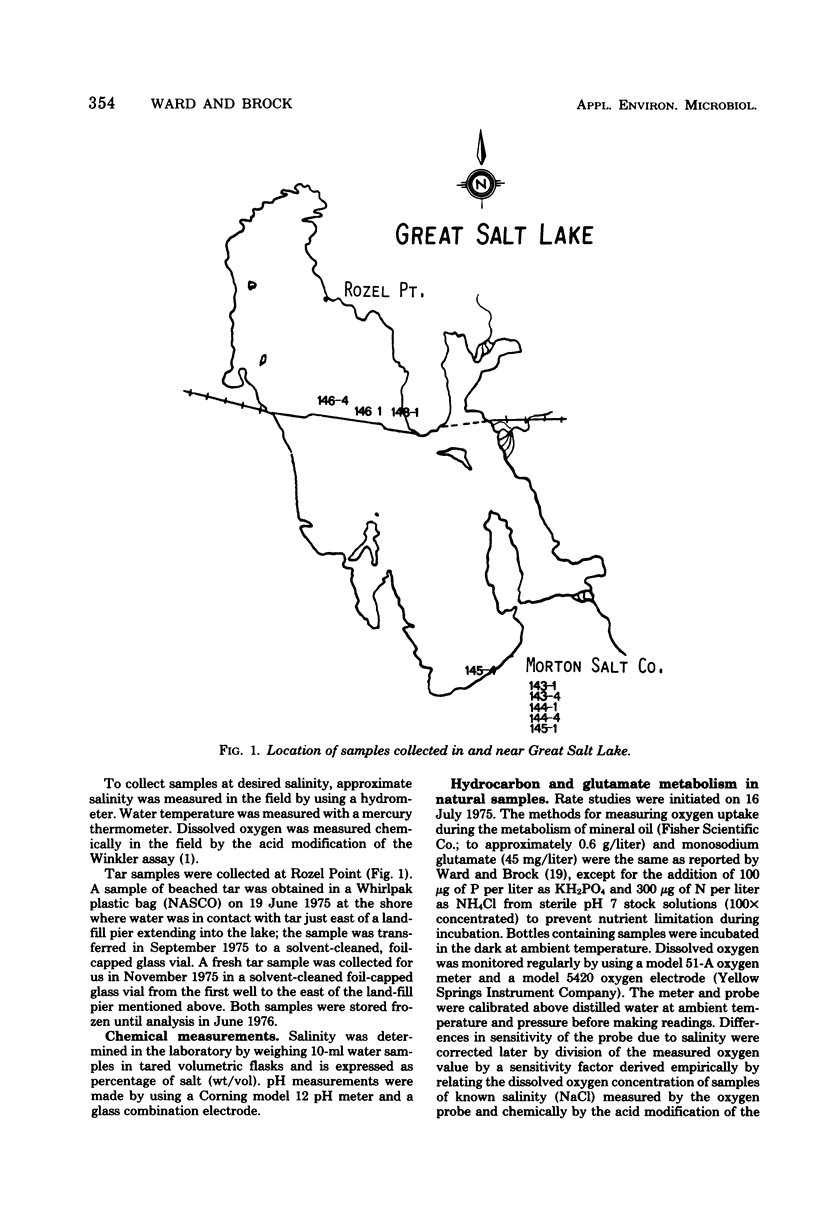
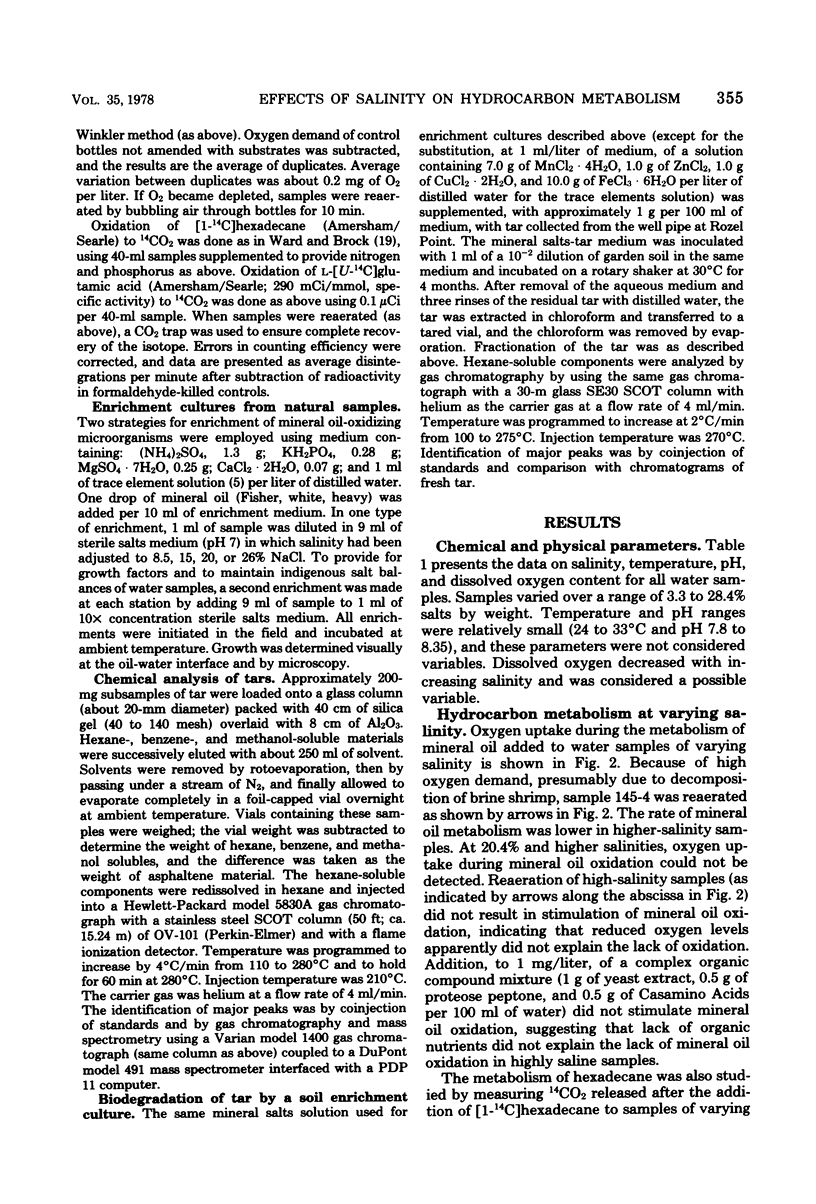
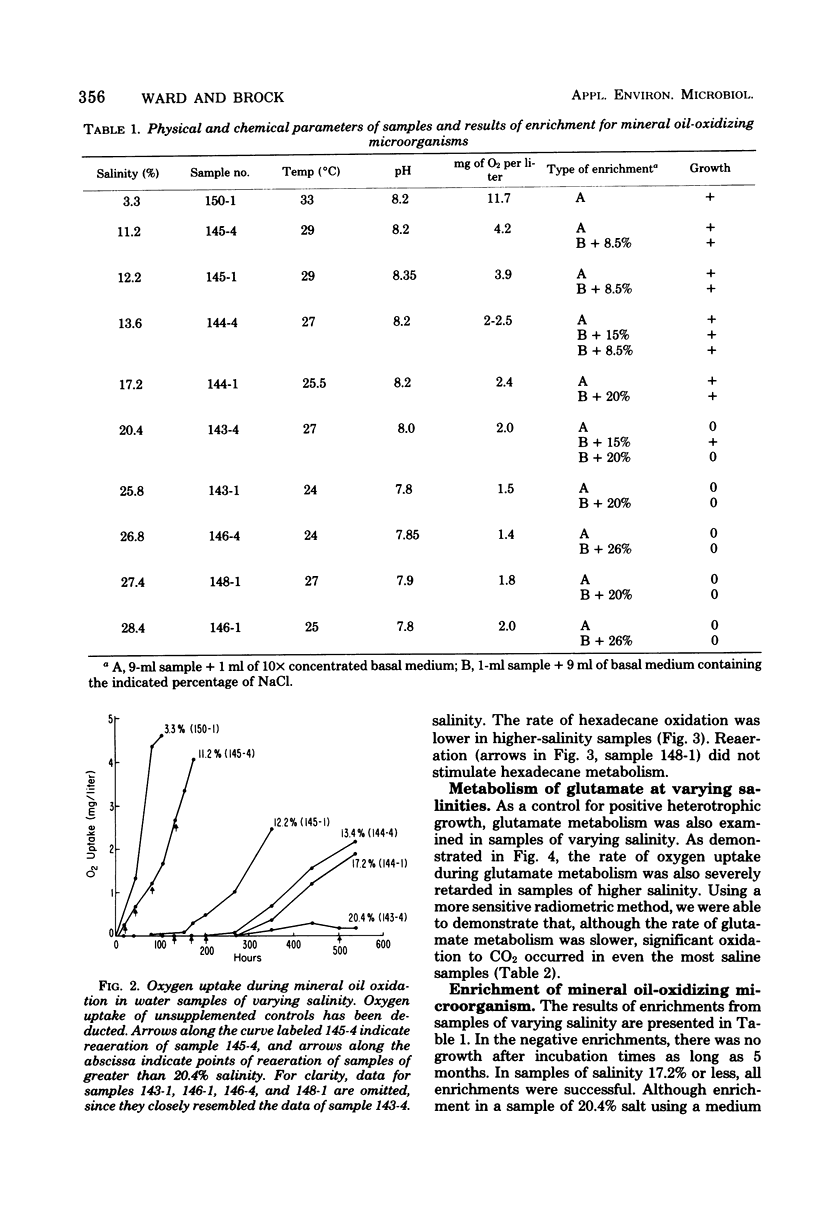
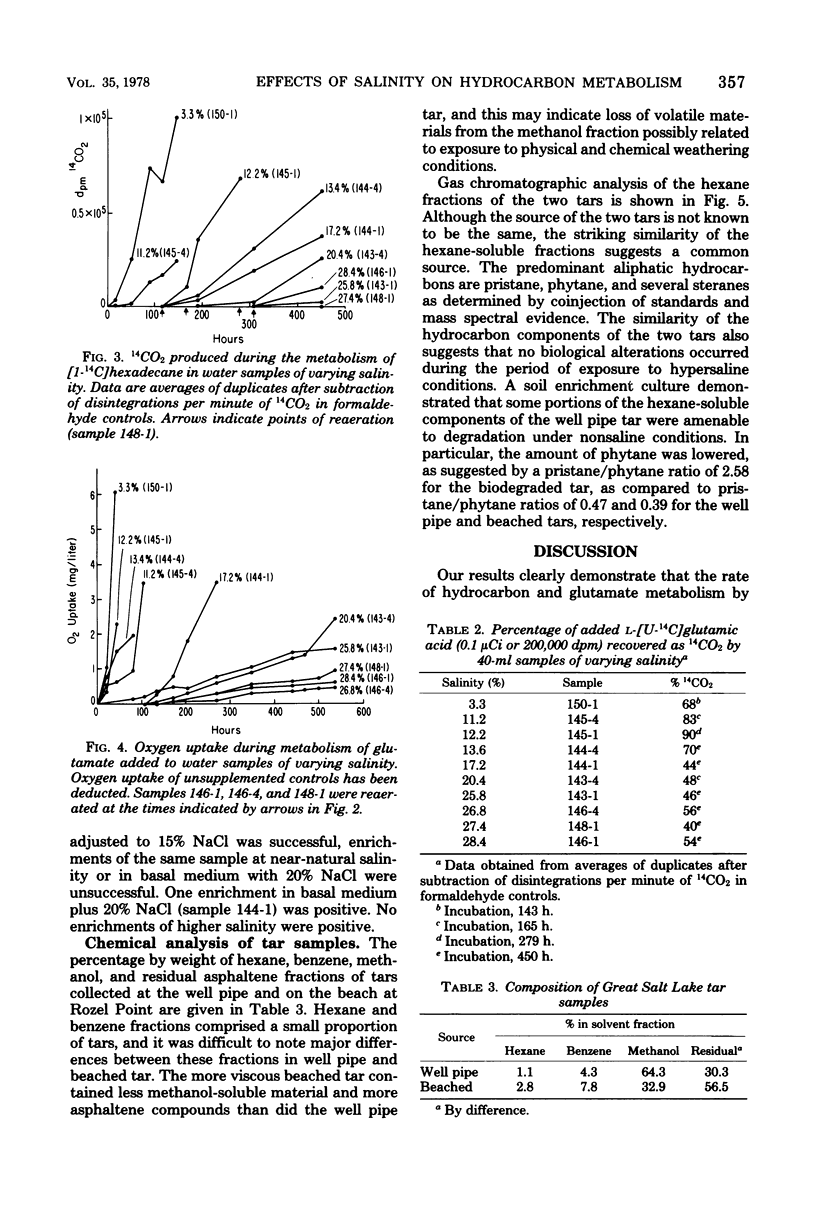
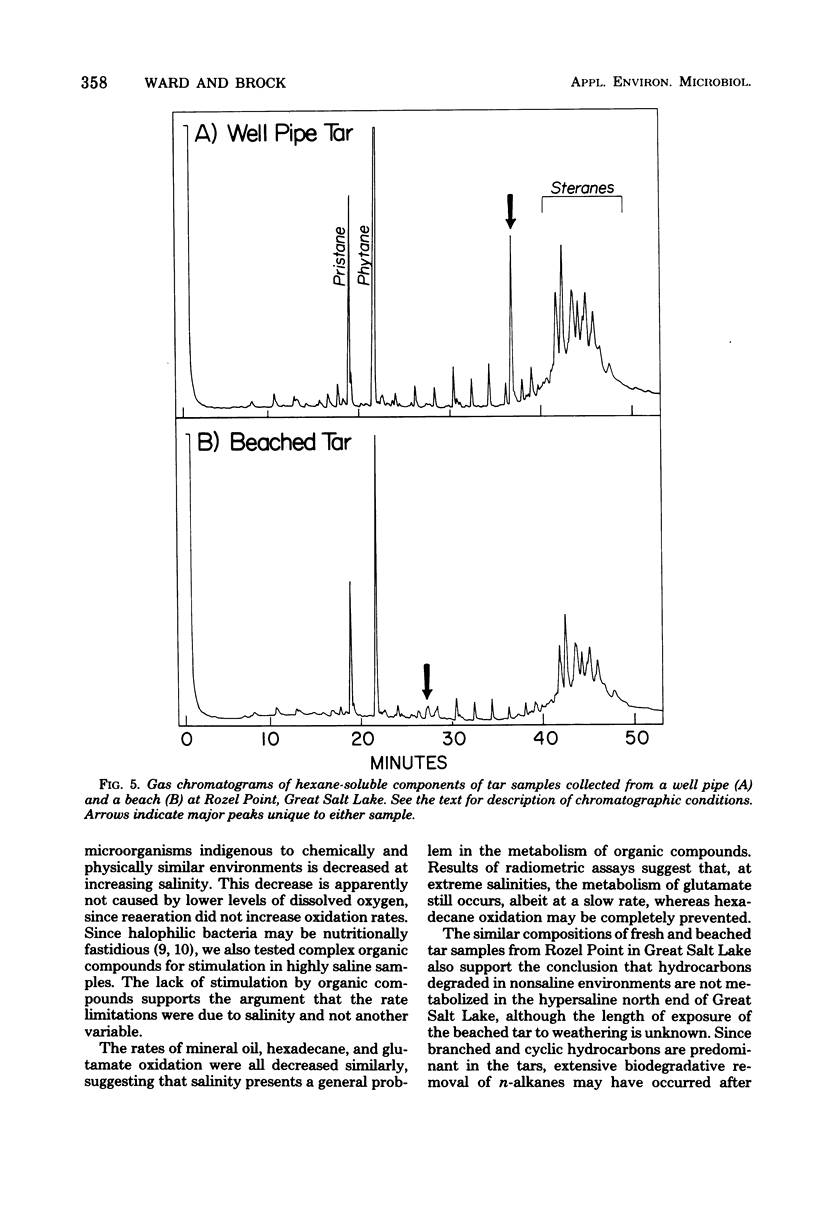
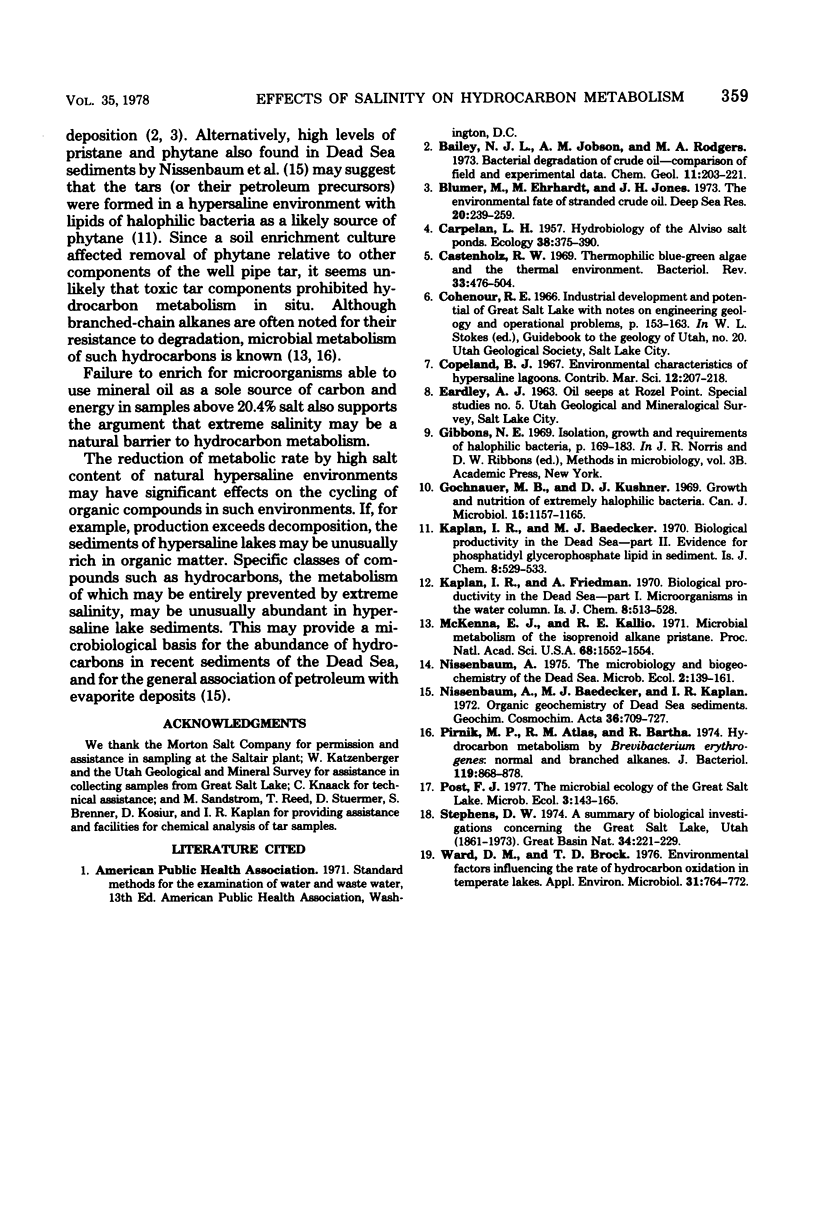
Selected References
These references are in PubMed. This may not be the complete list of references from this article.
- Castenholz R. W. Thermophilic blue-green algae and the thermal environment. Bacteriol Rev. 1969 Dec;33(4):476–504. doi: 10.1128/br.33.4.476-504.1969. [DOI] [PMC free article] [PubMed] [Google Scholar]
- Gochnauer M. B., Kushner D. J. Growth and nutrition of extremely halophilic bacteria. Can J Microbiol. 1969 Oct;15(10):1157–1165. doi: 10.1139/m69-211. [DOI] [PubMed] [Google Scholar]
- McKenna E. J., Kallio R. E. Microbial metabolism of the isoprenoid alkane pristane. Proc Natl Acad Sci U S A. 1971 Jul;68(7):1552–1554. doi: 10.1073/pnas.68.7.1552. [DOI] [PMC free article] [PubMed] [Google Scholar]
- Pirnik M. P., Atlas R. M., Bartha R. Hydrocarbon metabolism by Brevibacterium erythrogenes: normal and branched alkanes. J Bacteriol. 1974 Sep;119(3):868–878. doi: 10.1128/jb.119.3.868-878.1974. [DOI] [PMC free article] [PubMed] [Google Scholar]
- Pollard F. L., Zsako S., Kelsall M. A., Kaplan A. R. Antinuclear antibody factors and nuclear staining in mothers of children affected with Down's syndrome. Acta Genet Med Gemellol (Roma) 1970 Oct;19(4):529–533. doi: 10.1017/s1120962300014566. [DOI] [PubMed] [Google Scholar]
- Ward D. M., Brock T. D. Environmental factors influencing the rate of hydrocarbon oxidation in temperate lakes. Appl Environ Microbiol. 1976 May;31(5):764–772. doi: 10.1128/aem.31.5.764-772.1976. [DOI] [PMC free article] [PubMed] [Google Scholar]


